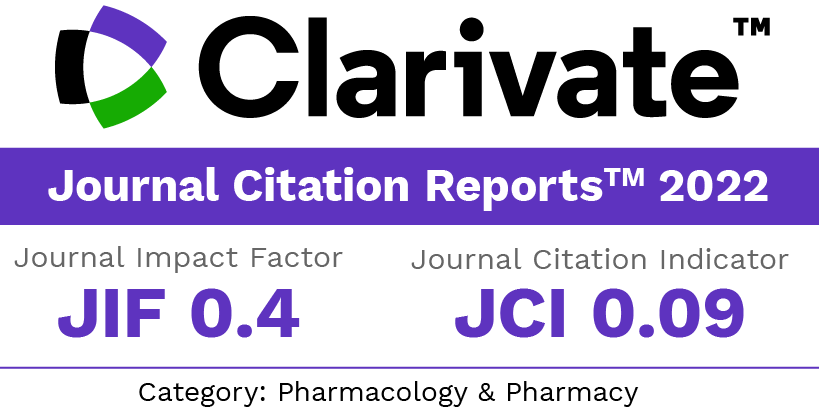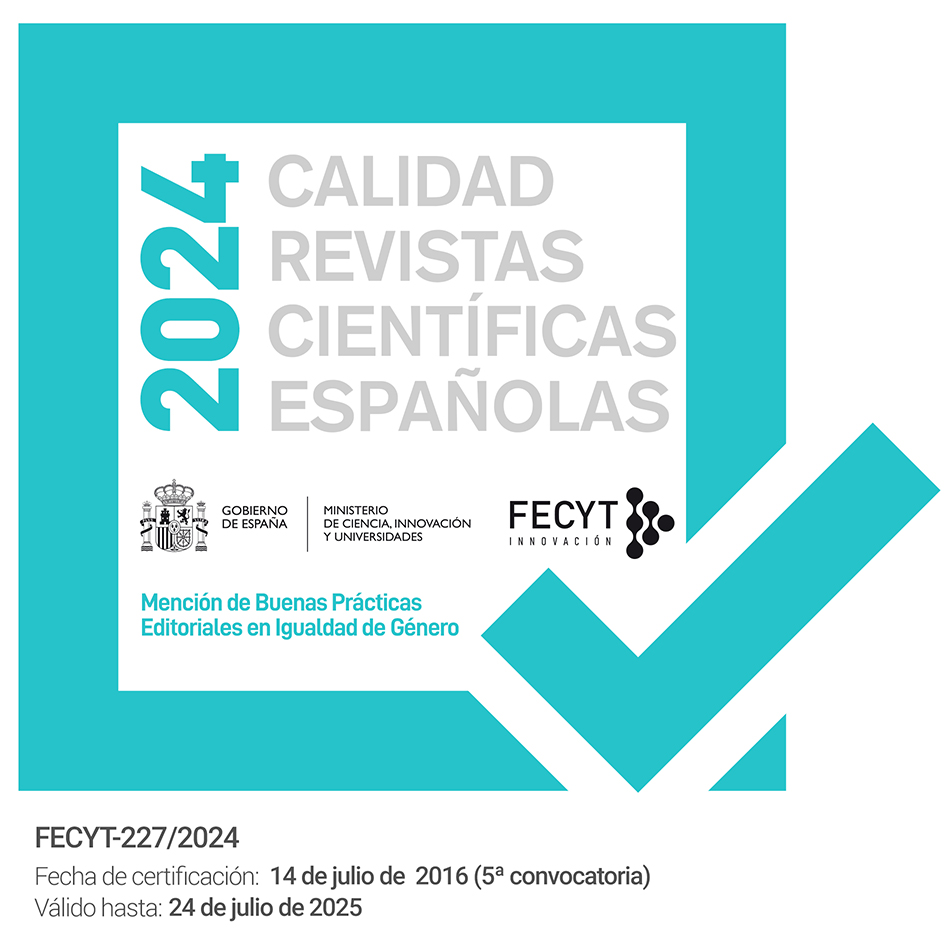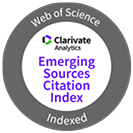Evaluation of the Probiotic Potential of Bacillus velezensis SNR14-4 Strain from Nile Tilapia Gills Using Genomic and In Vitro Approach
DOI:
https://doi.org/10.30827/ars.v66i2.31858Keywords:
Bacillus velezensis, Nile tilapia, Probiotics, Aquaculture, Antimicrobial, Genome sequenceAbstract
Introduction: The current investigation assessed a novel strain of Bacillus velezensis SNR14-4, isolated from the gills of Nile tilapia intending to consider it as a promising probiotic contender.
Methods: Initially, an extensive analysis of the genome of the particular isolate was carried out employing bioinformatics tools to anticipate its characteristics and potential probiotic attributes. The total genome of SNR14-4, recognized as B. velezensis via 16S rRNA and whole-genome sequencing and phylogenetic analysis, is composed of a singular circular chromosome with a genome size of 4.1 Mb, a total length of 4183910 bp, and an average guanine-cytosine (GC) content of 46.52 %. Valuable insights were acquired utilizing AntiSMASH to detect secondary metabolite biosynthetic gene clusters, and functional gene annotation relevant to probiotic traits was accomplished by utilizing RASTtk and PROKKA. The absence of virulence elements, ascertained via genomic analysis, facilitated a targeted in vitro exploration.
Results: SNR14-4 displayed notable probiotic characteristics and exhibited antimicrobial efficacy against common fish pathogens. HR-LCMS QTOF analysis of the microbial extract unveiled several potent antimicrobial compounds synthesized by the strain.
Conclusions: B. velezensis SNR14-4 showcases promise as a probiotic candidate, either as a single point of source or as a part of probiotic consortia made of similar strains.
Downloads
References
Fitzsimmons K M, Gonzalez-Alanis P, Martinez-Garcia R. Why is tilapia becoming the most important food fish on the planet? In Proceedings of the 9th International Symposium on tilapia in Aquaculture, Shanghai Ocean University, Shanghai, China. 2011. 22-24 April 2011 8–16.
Prabu E, Rajagopalsamy CBT, Ahilan B, Jeevagan IJMA, Renuhadevi M, Tilapia – An Excellent Candidate Species for World Aquaculture: A Review. Annu. Res. Rev. Biol. 2019: 1–14. doi:10.9734/arrb/2019/v31i330052. DOI: https://doi.org/10.9734/arrb/2019/v31i330052
Santos R A, Oliva-Teles A, Pousão-Ferreira P, Jerusik R, Saavedra M J, Enes P, Serra C R. Isolation and characterization of fish-gut Bacillus spp. as surce of natural antimicrobial compounds to fight aquaculture bacterial diseases. Marine Biotechnology., 2021;23: pp.276-293. doi: 10.1007/s10126-021-10022-x. DOI: https://doi.org/10.1007/s10126-021-10022-x
Hesami S, Parkman J, MacInnes JI, Gray JT, Gyles CL, Lumsden John S, Antimicrobial Susceptibility of Flavobacterium psychrophilum Isolates from Ontario. J. Aquat. Anim. Health. 2010; 22: 39–49. doi: 10.1577/H09-008.1. DOI: https://doi.org/10.1577/H09-008.1
FAO, Tilapia lake virus disease strategy manual, 2021. FAO.
Wan MLY, Forsythe SJ, El-Nezami H, Probiotics interaction with foodborne pathogens: a potential alternative to antibiotics and future challenges. Crit. Rev. Food Sci. Nutr. 2019;59:3320–3333. doi: 10.1080/10408398.2018.1490885. DOI: https://doi.org/10.1080/10408398.2018.1490885
Madhavan S, Dinesh N, Muhammed R N, John D, Hariharan S, Nevin K. G. Bioinformatic insights into the xenobiotic degradation potential gene clusters of fish-associated novel Bacillus velezensis SNR14-4. Env Exp Biol, 2024; 22(2):79–86. Doi:10.22364/eeb.22.08. DOI: https://doi.org/10.22364/eeb.22.08
Thankappan B, Ramesh D, Ramkumar S, Natarajaseenivasan K, Anbarasu K. Characterization of Bacillus spp. From the Gastrointestinal Tract of Labeo rohita—Toward to Identify Novel Probiotics Against Fish Pathogens. Appl. Biochem. Biotechnol., 2015;175: 340–353. doi: 10.1007/s12010-014-1270-y. DOI: https://doi.org/10.1007/s12010-014-1270-y
Banerjee G, Ray AK. The advancement of probiotics research and its application in fish farming industries. Res. Vet. Sci. 2017; 115:66–77. doi: 10.1016/j.rvsc.2017.01.016. DOI: https://doi.org/10.1016/j.rvsc.2017.01.016
Elsabagh M, Mohamed R, Moustafa EM, Hamza A, Farrag F, Decamp O, Dawood MAO, Eltholth M. Assessing the impact of Bacillus strains mixture probiotic on water quality, growth performance, blood profile and intestinal morphology of Nile tilapia, Oreochromis niloticus. Aquac. Nutr. 2018; 24: 613–1622. doi.org/10.1111/anu.12797. DOI: https://doi.org/10.1111/anu.12797
Fan B, Blom J, Klenk HP., Borriss, R., 2017. Bacillus amyloliquefaciens, Bacillus velezensis, and Bacillus siamensis Form an “Operational Group B. amyloliquefaciens” within the B. subtilis Species Complex. Front. Microbiol., 2017, Vol. 8. doi: 10.3389/fmicb.2017.00022. DOI: https://doi.org/10.3389/fmicb.2017.00022
Rabbee M, Ali, MD, Choi J, Hwang B, Jeong S, Baek K, Bacillus velezensis: A Valuable Member of Bioactive Molecules within Plant Microbiomes. Molecules. 2019; 24: 1046. doi.org/10.3390/separations10110552. DOI: https://doi.org/10.3390/molecules24061046
Khalid F, Khalid A, Fu Y, Hu Q, Zheng Y, Khan S, Wang Z. Potential of Bacillus velezensis as a probiotic in animal feed: a review. J. Microbiol. 2021; 59: 627–633. doi: 10.1007/s12275-021-1161-1. DOI: https://doi.org/10.1007/s12275-021-1161-1
Rehman NU, Abed RMM, Hussain H, Khan HY, Khan A, Khan AL. Ali, M. Al-Nasri, A. Al-Harrasi, K. Al-Rawahi, A.N., Wadood, A., Al-Rawahi, A., Al-Harrasi, A., Anti-proliferative potential of cyclotetrapeptides from Bacillus velezensis RA5401 and their molecular docking on G-Protein-Coupled Receptors. Microb. Pathog. 2018; 123: 419–425. doi: 10.1016/j.micpath.2018.07.043. DOI: https://doi.org/10.1016/j.micpath.2018.07.043
Ye M, Tang X, Yang R, Zhang H, Li F, Tao F, Li Fei, Wang Z. characteristics and Application of a Novel Species of Bacillus : Bacillus velezensis. ACS Chem. Biol. 2018; 13: 500–505. doi: 10.1021/acschembio.7b00874. DOI: https://doi.org/10.1021/acschembio.7b00874
Yi Y, Zhang Z, Zhao F, Liu H, Yu L, Zha J, Wang G. Probiotic potential of Bacillus velezensis JW: Antimicrobial activity against fish pathogenic bacteria and immune enhancement effects on Carassius auratus. Fish Shellfish Immunol. 2018;. 78: 322–330. doi: 10.1016/j.fsi.2018.04.055. DOI: https://doi.org/10.1016/j.fsi.2018.04.055
Zhang DX, Kang YH, Zhan S, Zhao ZL, Jin SN, Chen C, Zhang L, Shen JY, Wang CF, Wang GQ, Shan XF, Qian AD. Effect of Bacillus velezensis on Aeromonas veronii-Induced Intestinal Mucosal Barrier Function Damage and Inflammation in Crucian Carp (Carassius auratus). Front. Microbiol. 2019; 10: 2663. doi: 10.3389/fmicb.2019.02663. DOI: https://doi.org/10.3389/fmicb.2019.02663
Zhou S, Xia Y, Zhu C, Chu W. Isolation of Marine Bacillus sp. with Antagonistic and Organic-Substances-Degrading Activities and Its Potential Application as a Fish Probiotic. Mar. Drugs. 2018; 196. doi: 10.3390/md16060196
Giri SS, Sukumaran V, Dangi NK, Characteristics of Bacterial Isolates from the Gut of Freshwater Fish, Labeo rohita that May be Useful as Potential Probiotic Bacteria. Probiotics Antimicrob. Proteins. 2012; 4: 238–242. doi: 10.1007/s12602-012-9119-6. DOI: https://doi.org/10.1007/s12602-012-9119-6
Xiong Q, Liu D, Zhang H, Dong X, Zhang G, Liu Y, Zhang R. Quorum sensing signal autoinducer-2 promotes root colonization of Bacillus velezensis SQR9 by affecting biofilm formation and motility. Appl. Microbiol. Biotechnol. 2020; 104: 7177–7185. doi: 10.1007/s00253-020-10713-w. DOI: https://doi.org/10.1007/s00253-020-10713-w
An J, Zhu W, Liu Y, Zhang X, Sun L, Hong P, Wang Y, Xu C, Xu D, Liu H. Purification and characterization of a novel bacteriocin CAMT2 produced by Bacillus amyloliquefaciens isolated from marine fish Epinephelus areolatus. Food Cont. 2015; 51: 278–282. doi:10.1016/j.foodcont.2014.11.038. DOI: https://doi.org/10.1016/j.foodcont.2014.11.038
Green MR, Sambrook J. Isolating DNA from Gram-Negative Bacteria. Cold Spring Harb Protoc. 2017; 3: 2017. doi: 10.1101/pdb.prot093369. DOI: https://doi.org/10.1101/pdb.prot093484
Ray AK, Roy T, Mondal S, Ringà E. Identification of gut-associated amylase, cellulase and protease-producing bacteria in three species of Indian major carps. Aquac. Res. 2009; 41(10): 1462-1469. doi:10.1111/j.1365-2109.2009.02437.x DOI: https://doi.org/10.1111/j.1365-2109.2009.02437.x
Reda RM, Selim KM, El-Sayed HM, El-Hady MA. In Vitro Selection and Identification of Potential Probiotics Isolated from the Gastrointestinal Tract of Nile Tilapia, Oreochromis niloticus. Probiotics Antimicrob. Proteins. 2018; 10: 692–703. doi: 10.1007/s12602-017-9314-6. DOI: https://doi.org/10.1007/s12602-017-9314-6
Meier-Kolthoff JP, Gö. ker M. TYGS is an automated high-throughput platform for state-of-the-art genome-based taxonomy. Nat Commun. 2019; 10(1): 2182. doi: 10.1038/s41467-019-10210-3. DOI: https://doi.org/10.1038/s41467-019-10210-3
Meier-Kolthoff JP, Carbasse JS, Peinado-Olarte RL, Göker M. TYGS and LPSN: a database tandem for fast and reliable genome-based classification and nomenclature of prokaryotes. Nucleic Acids Res. 2022; 50(D1):D801-D807. doi: 10.1093/nar/gkab902 DOI: https://doi.org/10.1093/nar/gkab902
Jolley, K.A., Bray, J.E., Maiden, M.C.J. Open-access bacterial population genomics: BIGSdb software, the PubMLST.org website and their applications. Wellcome Open Res. 2018;24:124. doi: 10.12688/wellcomeopenres.14826.1. DOI: https://doi.org/10.12688/wellcomeopenres.14826.1
Richter M, Rosselló-Móra R, Oliver Glöckner F, Peplies J. JSpeciesWS: a web server for prokaryotic species circumscription based on pairwise genome comparison. Bioinformatics. 2016; 32(6): 929-931. doi: 10.1093/bioinformatics/btv681. DOI: https://doi.org/10.1093/bioinformatics/btv681
Schwengers O, Jelonek L, Dieckmann MA, Beyvers S, Blom J, Goesmann. A.Bakta: Rapid and Standardized Annotation of Bacterial Genomes via Alignment-Free Sequence Identification Microbial Genome. 2021; 7/11: 000685. doi: 10.1099/mgen.0.000685 DOI: https://doi.org/10.1099/mgen.0.000685
Tanizawa Y, Fujisawa T, Nakamura Y, DFAST: A Flexible Prokaryotic Genome Annotation Pipeline for Faster Genome Publication’, ed. by John Hancock Bioinformatics. 2018; 34/6: 1037–1039. doi: 10.1093/bioinformatics/btx713. DOI: https://doi.org/10.1093/bioinformatics/btx713
Olson RD, Assaf R, Brettin T, Conrad N, Cucinell C, Davis JJ, Dempsey DM, Dickerman A, Dietrich EM, Kenyon RW, Kuscuoglu M, Lefkowitz EJ, Lu J, Machi D, Macken CT. et al. Introducing the Bacterial and Viral Bioinformatics Resource Center (BV-BRC): A Resource Combining PATRIC, IRD and ViPR Nuc Acids Res. 2023; 51/D1: 2023, D678–689. doi: 10.1093/nar/gkac1003. DOI: https://doi.org/10.1093/nar/gkac1003
Joensen KG, Scheutz F, Lund O, Hasman H, Kaas RS, Nielsen EM, Aarestrup FM. Real-time whole-genome sequencing for routine typing, surveillance, and outbreak detection of verotoxigenic Escherichia coli. J Clin Microbiol. 2014;52(5):1501-1510. doi: 10.1128/JCM.03617-13. DOI: https://doi.org/10.1128/JCM.03617-13
Blin K, Shaw S, Augustijn HE, Reitz ZL, Biermann F, Alanjary M, Fetter A, Terlouw BR, Metcalf WW. EJN, van Wezel GP, Medema MH, Weber T. antiSMASH 7.0: New and Improved Predictions for Detection, Regulation, Chemical Structures and Visualization Nucleic Acids Res. 2023; 51/W1: W46–50. doi: 10.1093/nar/gkad344. DOI: https://doi.org/10.1093/nar/gkad344
Mistry J, Chuguransky S, Williams L, Qureshi M, Salazar GA, Sonnhammer ELL, Tosatto SCE, Paladin L, Raj S, Richardson LJ, Finn RD., Bateman A. Pfam: The protein families database in 2021. Nucleic Acids Res. 2021; 49(D1):D412-D419. doi: 10.1093/nar/gkaa913. DOI: https://doi.org/10.1093/nar/gkaa913
Meidong R, Khotchanalekha K, Doolgindachbaporn S, Nagasawa T., Nakao M, Sakai K, Tongpim S, Evaluation of probiotic Bacillus aerius B81e isolated from healthy hybrid catfish on growth, disease resistance and innate immunity of Pla-mong Pangasius bocourti. Fish Shellfish Immunol. 2018; 73:1-10. doi: 10.1016/j.fsi.2017.11.032. DOI: https://doi.org/10.1016/j.fsi.2017.11.032
Kuebutornye FKA, Lu Y, Abarike ED, Wang Z, Li Y, Sakyi ME, In vitro Assessment of the Probiotic Characteristics of Three Bacillus Species from the Gut of Nile Tilapia, Oreochromis niloticus. Prob Antimicrob. Prot. 2020; 12: 412–424. doi: 10.1007/s12602-019-09562-5. DOI: https://doi.org/10.1007/s12602-019-09562-5
Sam-On M F S, Mustafa S, Hashim AM, Yusof MT, Zulkifly S, Malek A Z A, Asrore M S M. Mining the genome of Bacillus velezensis FS26 for probiotic markers and secondary metabolites with antimicrobial properties against aquaculture pathogens. Microb Pathog. 2023;1181:106161. doi: 10.1016/j.micpath.2023.106161. DOI: https://doi.org/10.1016/j.micpath.2023.106161
Kapse NG, Engineer AS, Gowdaman V, Wagh S, Dhakephalkar PK, Functional Annotation of the Genome Unravels Probiotic Potential of Bacillus Coagulans HS243. Genomics. 2019; 111/4: 921–929. doi: 10.1016/j.ygeno.2018.05.022. DOI: https://doi.org/10.1016/j.ygeno.2018.05.022
Seemann T, Prokka: Rapid Prokaryotic Genome Annotation Bioinformatics. 2014; 30/14: 2068–2069. doi: 10.1093/bioinformatics/btu153. DOI: https://doi.org/10.1093/bioinformatics/btu153
Charteris WP, Kelly PM, Morelli L, Collins JK. Gradient Diffusion Antibiotic Susceptibility Testing of Potentially Probiotic Lactobacilli. J. Food Prot. 2021;64: 2007–2014. doi: 10.4315/0362-028x-64.12.2007. DOI: https://doi.org/10.4315/0362-028X-64.12.2007
Zhou S, Xia Y, Zhu C, Chu W. Isolation of Marine Bacillus sp. with Antagonistic and Organic-Substances-Degrading Activities and Its Potential Application as a Fish Probiotic. Mar. Drugs. 2018; 16: 196. doi: 10.3390/md16060196 DOI: https://doi.org/10.3390/md16060196
Baofeng J, Amogelang R. Raphenya, Brian Alcock, Nicholas Waglechner, Peiyao Guo, CARD 2017: expansion and model-centric curation of the comprehensive antibiotic resistance database, Nucleic Acids Research. 2017; 45: D566–D573. doi: 10.1093/nar/gkw1004. DOI: https://doi.org/10.1093/nar/gkw1004
Mahfouz N, Ferreira I, Beisken S, von Haeseler A, Posch AE. Large-scale assessment of antimicrobial resistance marker databases for genetic phenotype prediction: a systematic review. J Antimicrob Chemother 2020;75(11):3099-3108. doi: 10.1093/jac/dkaa257. DOI: https://doi.org/10.1093/jac/dkaa257
Bortolaia V, Kaas RS, Ruppe E, Roberts MC, Schwarz S, Cattoir V. ResFinder 4.0 for predictions of phenotypes from genotypes. J Antimicrob Chemother. 2020;75(12): 3491-3500. doi: 10.1093/jac/dkaa345. DOI: https://doi.org/10.1093/jac/dkaa345
Cosentino S, Voldby Larsen M, Møller Aarestrup F, Lund O. PathogenFinder--distinguishing friend from foe using bacterial whole genome sequence data. PLoS One. 2013; 8(10): e77302. doi: 10.1371/journal.pone.0077302. DOI: https://doi.org/10.1371/journal.pone.0077302
Zhou J, Xie Y, Liao Y, Li X, Li Y, Li S, Ma X, Lei S, Lin F, Jiang W, He YQ. Characterization of a Bacillus velezensis strain isolated from Bolbostemmatis Rhizoma displaying strong antagonistic activities against a variety of rice pathogens. Front. Microbiol. 2022; 13: 983781. doi: 10.3389/fmicb.2022.983781. DOI: https://doi.org/10.3389/fmicb.2022.983781
Chu J, Wang Y, Zhao B, Zhang X, Liu K, Mao L, Kalamiyets E. Isolation and identification of new antibacterial compounds from Bacillus pumilus. Appl. Microbiol. Biotechnol. 2019; 103:8375–8381. doi: 10.1007/s00253-019-10083-y. DOI: https://doi.org/10.1007/s00253-019-10083-y
Balakrishna A, In vitro evaluation of adhesion and aggregation abilities of four potential probiotic strains isolated from guppy (Poecilia reticulata). Braz. Arch. Biol. Technol. 2013; 56: 793–800. doi.org/10.1590/S1516-89132013000500010. DOI: https://doi.org/10.1590/S1516-89132013000500010
Kang M, Su X, Yun L, Shen Y, Feng J, Yang G, Meng X, Zhang J, Chang X. Evaluation of probiotic characteristics and whole genome analysis of Bacillus velezensis R-71003 isolated from the intestine of common carp (Cyprinus carpio L.) for its use as a probiotic in aquaculture. Aquac. Rep. 2022; 25: 101254. doi.org/10.1016/j.aqrep.2022.101254. DOI: https://doi.org/10.1016/j.aqrep.2022.101254
Wu Z, Qi X, Qu S, Ling F, Wang G. Dietary supplementation of Bacillus velezensis B8 enhances immune response and resistance against Aeromonas veronii in grass carp. Fish Shellfish Immunol. 2021; 115: 14–21. doi: 10.1016/j.fsi.2021.05.012. DOI: https://doi.org/10.1016/j.fsi.2021.05.012
Amoah K, Dong X, Tan B, Zhang S, Kuebutornye FKA, Chi S, Yang Q, Liu H, Zhang H, Yang Y.. In vitro Assessment of the Safety and Potential Probiotic Characteristics of Three Bacillus Strains Isolated From the Intestine of Hybrid Grouper (Epinephelus fuscoguttatus♀ × Epinephelus lanceolatus♂). Front. Vet. Sci. 2021; 8: PP. 675962. doi: 10.3389/fvets.2021.675962. DOI: https://doi.org/10.3389/fvets.2021.675962
Wang LT, Lee FL, Tai CJ, Kuo HP. Bacillus velezensis is a later heterotypic synonym of Bacillus amyloliquefaciens. Int. J. Syst. Evol. Microbiol. 2008; 58: 671–675. doi: 10.1099/ijs.0.65191-0. DOI: https://doi.org/10.1099/ijs.0.65191-0
Dunlap CA, Kim SJ, Kwon SW, Rooney AP.Bacillus velezensis is not a later heterotypic synonym of Bacillus amyloliquefaciens; Bacillus methylotrophicus, Bacillus amyloliquefaciens subsp. plantarum and ‘Bacillus oryzicola’ are later heterotypic synonyms of Bacillus velezensis based on phylogenomics. Int. J. Syst. Evol. Microbiol. 2016; 66: 1212–1217. doi: 10.1099/ijsem.0.000858. DOI: https://doi.org/10.1099/ijsem.0.000858
Huynh T, Vörös M, Kedves O, Turbat A, Sipos G, Leitgeb B, Kredics L, Vágvölgyi C, Szekeres A. Discrimination between the Two Closely Related Species of the Operational Group B. amyloliquefaciens Based on Whole-Cell Fatty Acid Profiling. Microorganisms. 2022; 10(2):418. doi:10.3390/microorganisms10020418 DOI: https://doi.org/10.3390/microorganisms10020418
Adeniji AA, Loots DT, Babalola OO. Bacillus velezensis: phylogeny, useful applications, and avenues for exploitation. Appl. Microbiol. Biotechnol. 2019; 103:3669–3682. doi: 10.1007/s00253-019-09710-5. DOI: https://doi.org/10.1007/s00253-019-09710-5
Wei, M., Zhang, M., Huang, G., Yuan, Y., Fu, C., Yu, L., Coculture with two Bacillus velezensis strains enhances the growth of Anoectochilus plants by promoting nutrient assimilation and regulating rhizosphere microbial community. Ind. Crops Prod., 2020, Vol. 154,pp 112697. doi:10.1016/j.indcrop.2020.11269. DOI: https://doi.org/10.1016/j.indcrop.2020.112697
Liu KF, Chiu CH, Shiu YL, Cheng W, Liu CH. Effects of the probiotic, Bacillus subtilis E20, on the survival, development, stress tolerance, and immune status of white shrimp, Litopenaeus vannamei larvae. Fish Shellfish Immunol. 2010; 28: 837–844. doi: 10.1016/j.fsi.2010.01.012. DOI: https://doi.org/10.1016/j.fsi.2010.01.012
Elshaghabee FMF, Rokana N, Gulhane RD, Sharma C, Panwar H. Bacillus As Potential Probiotics: Status, Concerns, and Future Perspectives. Front. Microbiol. 2017; 8:1490. doi: 10.3389/fmicb.2017.01490. DOI: https://doi.org/10.3389/fmicb.2017.01490
Shija VM, Amoah K, Cai J. Effect of bacillus probiotics on the immunological responses of Nile tilapia (Oreochromis niloticus): A Rev Fishes. 2023; 8(7):366. doi.org/10.3390/fishes8070366. DOI: https://doi.org/10.3390/fishes8070366
Chen B, Zhou Y, Duan L, Gong X, Liu X, Pan K, Zeng D, Ni X, Zeng Y. Complete genome analysis of Bacillus velezensis TS5 and its potential as a probiotic strain in mice. Front Microbiol. 2023;14:1322910. doi: 10.3389/fmicb.2023.1322910. DOI: https://doi.org/10.3389/fmicb.2023.1322910
Zhang DF, Gao YX, Ke XL, Wang YJ. Genomic analysis of Bacillus velezensis LF01 strain and the biocontrol effect of its secondary metabolites. J Fish China. 2022; 46 (2): 196-206.
Liu L, Jiang D, Ren Y, Shi C, Wang Y, Yin J, Wang Q, Zhang D. The Bacillus velezensis CYS06 Strain Exhibits Promising Applications in Fighting Grass Carp Bacterial Diseases. Fishes. 2024; 9(1):7. doi:10.3390/fishes9010007. DOI: https://doi.org/10.3390/fishes9010007
Gao X, Chen A, Zhou Y, Qian Q, Qin L, Tang X, Jiang Q, Zhang X. Genomic characterization and probiotic potency of Bacillus velezensis CPA1-1 reveals its potential for aquaculture applications. Aquaculture. 2025; 596:741852. doi 10.1016/j.aquaculture.2024.741852 DOI: https://doi.org/10.1016/j.aquaculture.2024.741852
Bin Hafeez A, Pełka K, Worobo R, Szweda P. In Silico Safety Assessment of Bacillus Isolated from Polish Bee Pollen and Bee Bread as Novel Probiotic Candidates. Int J Mol Sci. 2024; 25(1):666. doi: 10.3390/ijms25010666. DOI: https://doi.org/10.3390/ijms25010666
Hai NV. Research findings from the use of probiotics in tilapia aquaculture: A review. Fish Shellfish Immunol. 2015: 45: 592–597. doi: 10.1016/j.fsi.2015.05.026. DOI: https://doi.org/10.1016/j.fsi.2015.05.026
Krausova G, Hyrslova I, Hynstova I. In Vitro Evaluation of Adhesion Capacity, Hydrophobicity, and AutoAggregation of Newly Isolated Potential Probiotic Strains. Fermentation. 2019; 5: 100. doi:10.3390/fermentation5040100. DOI: https://doi.org/10.3390/fermentation5040100
Monteagudo-Mera A, Rastall RA, Gibson GR, Charalampopoulos D, Chatzifragkou A. Adhesion mechanisms mediated by probiotics and prebiotics and their potential impact on human health. Appl. Microbiol. Biotechnol. 2019; 103: 6463–6472. doi: 10.1007/s00253-019-09978-7. DOI: https://doi.org/10.1007/s00253-019-09978-7
Vinderola CG, Medici M, Perdigon G. Relationship between interaction sites in the gut, hydrophobicity, mucosal immunomodulating capacities and cell wall protein profiles in indigenous and exogenous bacteria. J. Appl. Microbiol. 2004; 96: 230–243. doi: 10.1046/j.1365-2672.2004.02158.x. DOI: https://doi.org/10.1046/j.1365-2672.2004.02158.x
Hernandez-Hernandez O, Muthaiyan A, Moreno FJ, Montilla A, Sanz ML, Ricke SC. Effect of prebiotic carbohydrates on the growth and tolerance of Lactobacillus. Food Microbiol. 2012; 30: 355–361. doi: 10.1016/j.fm.2011.12.022. DOI: https://doi.org/10.1016/j.fm.2011.12.022
Narimbi J, Mazumder D, Sammut J. Stable isotope analysis to quantify contributions of supplementary feed in Nile Tilapia Oreochromis niloticus (GIFT strain) aquaculture. Aquac. Res. 2018; 49: 1866–1874. doi:10.1111/are.13642. DOI: https://doi.org/10.1111/are.13642
Abarike, ED, Cai J, Lu Y, Yu H, Chen L, Jian J, Tang J, Jun L, Kuebutornye FKA. Effects of a commercial probiotic BS containing Bacillus subtilis and Bacillus licheniformis on growth, immune response and disease resistance in Nile tilapia, Oreochromis niloticus. Fish Shellfish Immunol. 2018; 82: 229–238. doi: 10.1016/j.fsi.2018.08.037. DOI: https://doi.org/10.1016/j.fsi.2018.08.037
Liu G, Kong Y, Fan Y, Geng CE, Peng D, Sun Ming. Whole-genome sequencing of Bacillus velezensis LS69, a strain with a broad inhibitory spectrum against pathogenic bacteria. J Biotech. 2017; 249: 20–24. doi: 10.1016/j.jbiotec.2017.03.018. DOI: https://doi.org/10.1016/j.jbiotec.2017.03.018
Emam AM, Dunlap CA. Genomic and phenotypic characterization of Bacillus velezensis AMB-y1; a potential probiotic to control pathogens in aquaculture. Antonie Van Leeuwenhoek. 2020; 113: 2041–2052. doi: 10.1007/s10482-020-01476-5. DOI: https://doi.org/10.1007/s10482-020-01476-5
Prasanth D, Reddy LS, Dasari T, Bhavanam PR, Ahmad SF, Nalluri R, Pasala PK. LC/MS-Based Profiling of Hedyotis aspera Whole-Plant Methanolic Extract and Evaluation of Its Nephroprotective Potential against Gentamicin-Induced Nephrotoxicity in Rats Supported by In Silico Studies. Separations. 2023; 10(11):552. DOI: https://doi.org/10.3390/separations10110552
Saleem H, Htar T T, Naidu R, Zengin G, Locatelli M, Tartaglia A, Ahemad N. Phytochemical composition and enzyme inhibition studies of Buxus papillosa CK Schneid. Processes. 2020;8(7):757. doi.org/10.3390/pr8070757. DOI: https://doi.org/10.3390/pr8070757
Myers AL. Metabolism of the areca alkaloids–toxic and psychoactive constituents of the areca (betel) nut. Drug Metabol Rev. 2022;54(4):343-360. doi: 10.1080/03602532.2022.2075010. DOI: https://doi.org/10.1080/03602532.2022.2075010
Yoshikawa K, Katsuta S, Mizumori J, Arihara S, Four cycloartane triterpenoids and six related saponins from Passiflora edulis. J Nat Prod. 2000; 63(9):1229-1234. doi: 10.1021/np000126+. DOI: https://doi.org/10.1021/np000126+
Chandwani S, Dewala S, Chavan SM, Paul D, Kumar K, Amaresan N. Genomic, LC–MS, and FTIR Analysis of Plant Probiotic Potential of Bacillus albus for Managing Xanthomonas oryzae via Different Modes of Application in Rice (Oryza sativa L.). Prob Antimicrobial Prot. 2023; 18: 1-2. doi: 10.1007/s12602-023-10120-3. DOI: https://doi.org/10.1007/s12602-023-10120-3
Dutcher JD, Aspergillic Acid: An Antibiotic Substance Produced by Aspergillus Flavus: II. 1947.Bromination Reactions and Reduction With Sodium and Alcohol. J Biol Chem.1947;171(1): 341-53. DOI: https://doi.org/10.1016/S0021-9258(17)41132-X
Seydlová G, Svobodová J. Review of surfactin chemical properties and the potential biomedical applications. Cent Eur J Med. 2008; 3: 123-33. doi.org/10.2478/s11536-008-0002-5. DOI: https://doi.org/10.2478/s11536-008-0002-5
Wu YS, Ngai S C, Goh B H, Chan K G, Lee LH, Chuah LH. Anticancer activities of surfactin and potential application of nanotechnology assisted surfactin delivery. Frontiers in Pharmacol. 2017; 8:761. doi: 10.3389/fphar.2017.00761 DOI: https://doi.org/10.3389/fphar.2017.00761
Downloads
Published
How to Cite
Issue
Section
License
Copyright (c) 2025 Nevin Kottayath Govindan

This work is licensed under a Creative Commons Attribution-NonCommercial-ShareAlike 4.0 International License.
The articles, which are published in this journal, are subject to the following terms in relation to the rights of patrimonial or exploitation:
- The authors will keep their copyright and guarantee to the journal the right of first publication of their work, which will be distributed with a Creative Commons BY-NC-SA 4.0 license that allows third parties to reuse the work whenever its author, quote the original source and do not make commercial use of it.
b. The authors may adopt other non-exclusive licensing agreements for the distribution of the published version of the work (e.g., deposit it in an institutional telematic file or publish it in a monographic volume) provided that the original source of its publication is indicated.
c. Authors are allowed and advised to disseminate their work through the Internet (e.g. in institutional repositories or on their website) before and during the submission process, which can produce interesting exchanges and increase citations of the published work. (See The effect of open access).























